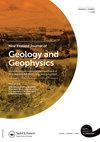沟坡盆地填土的横向、纵向和时间变化:新西兰Hikurangi边缘新近系Akitio次盆地的例子
IF 1.9
4区 地球科学
Q1 GEOLOGY
New Zealand Journal of Geology and Geophysics
Pub Date : 2021-10-06
DOI:10.1080/00288306.2021.1977343
引用次数: 4
摘要
沟槽斜坡盆地的填土是复杂的,随时间、横向和纵向变化。Wairarapa Akitio次盆地新近系地层的新数据用于研究这种填充变化。保留的盆地填充物横跨区域70 长10公里 km宽,代表来自沟坡盆地的沉积物。沉积学、微生态学和地质测绘数据的整合绘制了盆地充填演化图。超过15 记录了km的地层,确定了17个岩相组合,并绘制了整个盆地的地图;这些被解释为代表浅水和深水环境。深水地层表现出从洪积浊积岩沉积到通过连接下游盆地的管道进行的盆地溢流、加积河道堤防的发育,最后是无侧限海底扇沉积的时间演变。浅海沉积主要发育在上倾盆地边缘,与盆地物质输送沉积同时发生,并与盆地边界构造脊的生长有关。与近海的演变相比,Akitio海槽的积极填充突出了对沟坡盆地填充的控制:外部控制的一阶影响,例如形成盆地的构造作用;从不足到过度填充的二阶级数;以及反映自生过程和局部结构对海底梯度影响的三阶横向变化。这些因素结合在一起,在空间和时间上改变了沟坡盆地的沉积。本文章由计算机程序翻译,如有差异,请以英文原文为准。
Lateral, longitudinal, and temporal variation in trench-slope basin fill: examples from the Neogene Akitio sub-basin, Hikurangi Margin, New Zealand
ABSTRACT The fill of trench-slope basins is complex, varying temporally, laterally, and longitudinally. New data from the Neogene stratigraphy of the Akitio Sub-basin, Wairarapa, are presented to investigate such fill variation. The preserved basin fill spans an area 70 km long by 10 km wide, representing deposits from a trench-slope basin. Integration of sedimentological, micropalaeoentological, and geological mapping data charts basin fill evolution. Over 15 km of strata were logged, defining 17 lithofacies associations, which were mapped across the basin; these are interpreted to represent both shallow and deep-water environments. The deep-water strata show a temporal evolution from ponded turbidite deposition, to a period of basin spill via conduits connecting to downstream basins, development of aggradational channel-levees, and finally unconfined submarine fan deposition. Shallow marine deposits mostly developed on the up-dip basin margin occur contemporaneously with basinal mass-transport deposits, and in association with the growth of basin bounding structural ridges. Comparison with the evolution of the offshore, actively filling Akitio Trough highlights controls on trench-slope basin fill: a first-order influence of external controls, e.g. tectonism to create the basin; a second-order progression from under- to overfilled; and third-order lateral variation reflecting autogenic process and the effects of local structures on seafloor gradients. These factors combine to vary sedimentation in trench-slope-basins spatially and temporally.
求助全文
通过发布文献求助,成功后即可免费获取论文全文。
去求助
来源期刊
CiteScore
5.10
自引率
27.30%
发文量
34
审稿时长
>12 weeks
期刊介绍:
Aims: New Zealand is well respected for its growing research activity in the geosciences, particularly in circum-Pacific earth science. The New Zealand Journal of Geology and Geophysics plays an important role in disseminating field-based, experimental, and theoretical research to geoscientists with interests both within and beyond the circum-Pacific. Scope of submissions: The New Zealand Journal of Geology and Geophysics publishes original research papers, review papers, short communications and letters. We welcome submissions on all aspects of the earth sciences relevant to New Zealand, the Pacific Rim, and Antarctica. The subject matter includes geology, geophysics, physical geography and pedology.

 求助内容:
求助内容: 应助结果提醒方式:
应助结果提醒方式:


